
[ad_1]
All products recommended by Engadget are selected by our editorial team, independent of our parent company. Some of our stories include affiliate links. If you buy something through one of these links, we may earn an affiliate commission.
What a week, y’all. First up, we have the new WF-1000XM4 wireless earbuds from Sony, which Billy Steele says are nearly perfect save for the earbud tips. Next, we hear from Devindra Hardawar who says the NVIDIA GTX 3070 Ti is a decent video card — but hey, so is any video card you can get your hands on right now, right? Kris Naudus also tried out the latest Tamagotchi only for it to go down in flames (or poop, as it were), and the Game Builder Garage for the Nintendo Switch, which went much more smoothly.

Billy Steele/Engadget
Billy Steele has recommended the Sony WF-1000XM3 wireless earbuds multiple times for their sound quality and features, so he was eager to check out the latest model, the WF-1000XM4. The recently announced buds are redesigned in a more “traditional” earbud shape, which is 10 percent smaller and more circular than their predecessors. Despite their compact size, Billy still found them a bit bulky and less than comfortable to wear than the previous models— and the culprits were the new Noise Isolation Earbud Tips. He strongly recommends that folks use the in-app test to ensure the best fit (he wound up repurposing the tips from the XM3s).
Despite the fit issues, Billy found a lot to like about the XM4: they maintain a balanced audio profile across lows, mids and highs and have great clarity in reproducing subtle details on acoustic tracks. He was also impressed by the features: in addition to the EQ, Adaptive Sound Control and 360 Reality Audio from the previous version, the XM4s also include a V1 Integrated Processor to improve noise cancellation, and a speak to chat function that will automatically pause audio when the buds detect that you’re speaking. The XM4’s also support LDAC, which is similar to lossless audio and should help you enjoy high-res streaming services. However, the $280 price tag does push them into premium territory.
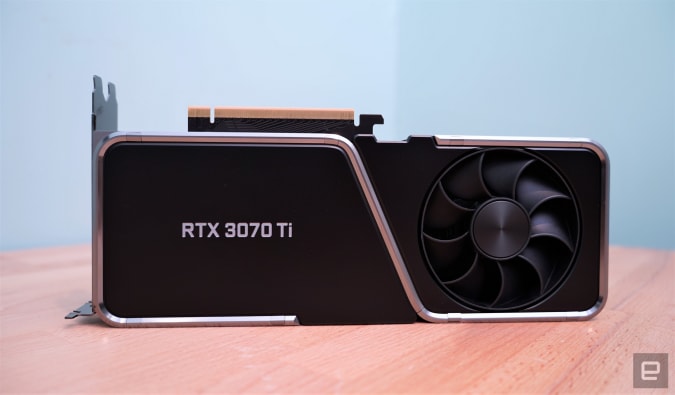
Devindra Hardawar/Engadget
A mid-range GPU that should be a solid replacement for the 2070 Super, NVIDIA’s RTX 3070 Ti isn’t a huge leap ahead. Devindra Hardawar put the video card through its paces and found that, despite the 6,144 NVIDIA CUDA cores, it was only slightly faster in base and boost clock speeds than the RTX 3070. In benchmarks, the Ti model hit 6,842 points in 3DMark’s TimeSpy Extreme test (just 616 points higher than the previous card). He also saw close to a 10-percent improvement in the ray tracing benchmark.
Real world testing produced similar results, and the 3070 Ti proved itself an excellent 1440p GPU but only slightly better than the 3070. In Destiny 2, Devindra was able to hit 145 to 155fps and in Control he reached up to 75fps while playing in 1440p natively with high graphics settings (but no ray tracing). However, the 3070 Ti uses more power than the previous model — it requires at least a 750W power supply and runs hotter than the 3070. Devindra said he noticed more persistent fan noise, which was no surprise given that the card reached 78 Celsius. While the Ti isn’t too costly at $600, shelf price may be more than that due to chip shortages.
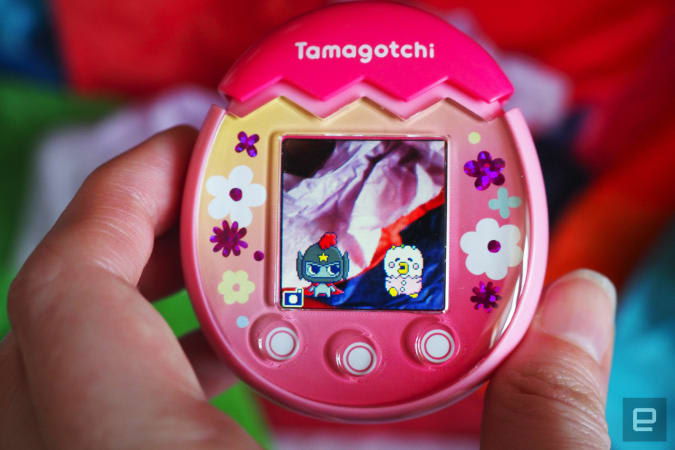
Kris Naudus/Engadget
It’s hard to believe that it’s been 25 years since Bandai released the first virtual pet Tamagotchi, or that there have been over 44 versions released since then. Kris Naudus found the most recent, the Tamagotchi Pix, in her hands recently. Featuring a 1.5-inch color LCD screen and touch buttons, this version also includes a camera on the back that lets users explore by pointing the camera around you. The device samples a color and then generates a new friend for your creature to meet. You can also point your camera towards a food item to “cook” it for your Tamagotchi pet.
That all sounds like an interesting update to the more traditional Tamagotchi activities like playing in the yard, bath time and shopping or cleaning. However, Kris found that it didn’t work very well in practice. The camera didn’t pick up colors well indoors, so many of her samples returned brownish hues. And because the camera doesn’t have the power to identify what is and isn’t real food, it will read whatever you point it at as nutritional in some way. That’s largely forgivable, but the real issue Kris ran into was with the touch buttons, which were glitchy and unreliable — leaving her Tamagotchi dirty and miserable, and leaving her frustrated.
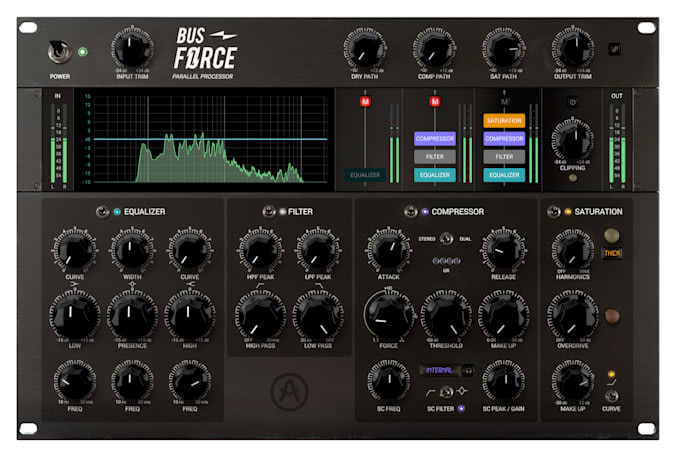
Terrence O’Brien/Engadget
Arturia’s previous FX Collection included fifteen effects plugins for $399; not entirely a bargain despite the company’s faithful recreations. Terrence O’Brien was pleased to see that the newest collection includes four additional modulation effects (the Chorus Jun-6 and three bus effects including one based on the ‘70’s Siemens broadcast console). Though he found the effects themselves to be excellent, he’s quick to admit that if you’re not a huge fan of skeuomorphic design, you probably won’t dig the look of these FX.
However, Arturia’s meticulous emulations paired with new in-app tutorials and a simplified preset browser gave him a lot to work with. He says the Siemens and Neve emulations both sound great, though the Bus FORCE quickly became his favorite as it combines an EQ, limiter, compressor and saturator. Terrence also particularly enjoyed the saturation section of the circuit which gives a lot of different options for dialing in saturation and overdrive separately. The clipping was a touch harsh for his tastes, as it was a bit more digital sounding. Overall, if you already have the FX Collection, there might not be enough new here to justify the purchase — but for $299, it’s an appealing offer for those who are ready to jump in for the first time.
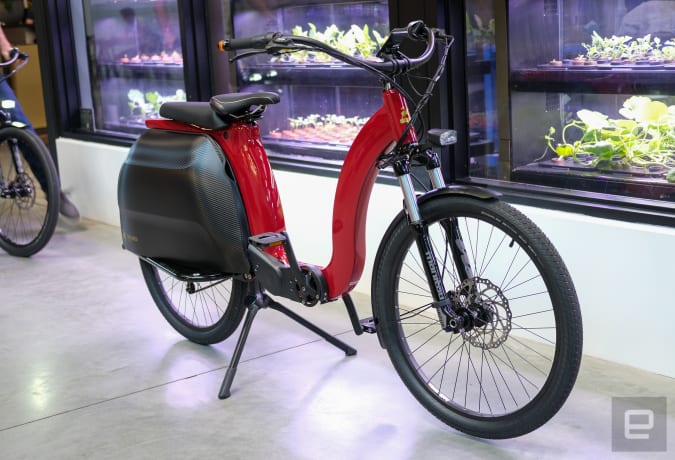
Chris Velazco/Engadget
The posh look of the Civilized Cycle’s Model 1 immediately caught Chris Velazco’s eye, but it was riding the $5,500 e-bike that convinced him of its practicality. He says the Model 1 rides better than traditional e-bikes thanks to the automatic suspension that uses a computerized air pump to adjust to one (or two) riders. The Model 1 can support up to 400 pounds, and is intended for two riders. In real world testing, Chris and video producer Brian Oh found the Model 1 remarkably comfortable to ride even while deliberately running over rough roads and small debris.
Weighing in at 90 pounds, the Model 1 has a mid-frame motor that is connected to a five-speed transmission and a conveniently located 10.5 amp-hour battery to help the bike hit speeds of up to 30mph (and to give your devices a charge). The battery is rated for up to 25 miles per charge. A throttle is built into the right handlebar and the pedal-assist system responds to each stroke with additional power. The Model 1 also features hard-shell panniers on either side of the rear wheel that can each accommodate 20L when closed or 80L when open, which should be more than enough for a quick grocery run. It also has a PIN to lock the bike, and an integrated GPS in case it gets stolen.
The updated Moto G Stylus supports 5G
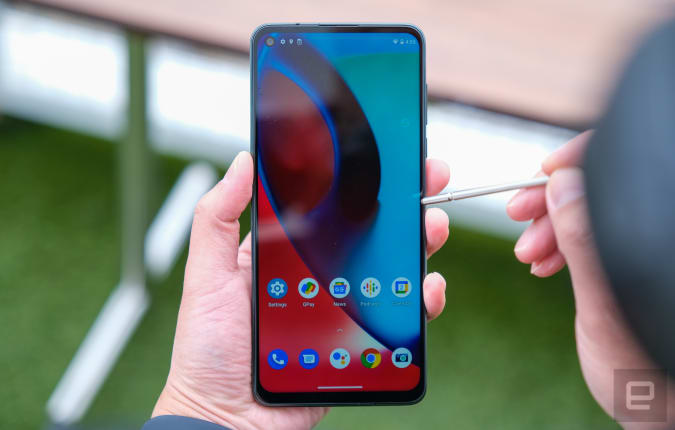
Chris Velazco/Engadget
Motorola’s 2021 5G budget phone quickly became a best seller for the company, and now it’s brought 5G connectivity to its $400 stylus-toting handset. Chris Velazco says the Moto G Stylus 5G is basically enormous with a 6.8-inch Full HD+ display, but the 20.5:9 aspect ratio makes it manageable. That display produced some impressively punchy colors and had plenty of room for videos, but Chris was concerned about how well it would do in very bright sunlight. He felt that the redesigned capacitive stylus was easy to use on the big screen, though admits it can’t outperform the precision of the S Pen.
Chris spent some time testing out the Moto G’s quad-camera system at a Yankees-Rays game and says it’s plenty respectable. The 48MP main sensor with an f/1.7 aperture took surprisingly detailed shots, and the 8-megapixel ultra-wide camera also performed nicely though with a notable lack of detail. The new video modes were fun for mucking about, but not game changers. However, the 6GB of RAM, 256GB of internal storage, 5,000 mAh battery and Snapdragon 480 5G chipset were entirely capable for most day-to-day tasks.
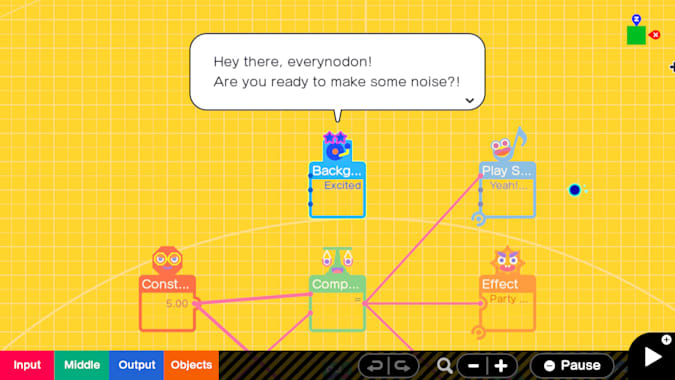
Nintendo
Kris Naudus has tried coding before, but it never quite stuck. The Game Builder Garage for Nintendo Switch may be what turns that around for her. Using cute blocks called Nodons, the program’s complete with personalities and story lines to help the player understand how to build a game. Kris says that there’s a good amount of instruction and hand-holding via the Interactive Lessons, but that she found the process largely helpful and encouraging. Those who have more experience can opt to skip the lessons and head to the Free Programming mode.
Kris particularly liked how easy it was to toggle between these two modes, which made it easy to see under the hood as well as what the game play currently looked like. And the game offers helpful details, such as how long each lesson will take by breaking down the lesson into smaller, easy to complete steps. It also features checkpoints to help you understand the right way to “fix” a problem — the game guides you by locking down functions you don’t need and by giving hints via the Nodons. Kris says the engine is best suited for action titles, and that users can share games by exchanging codes. While she’s tried out other programming tools, she says none of them are as patient or forgiving as Game Builder Garage.
[ad_2]
Source link






